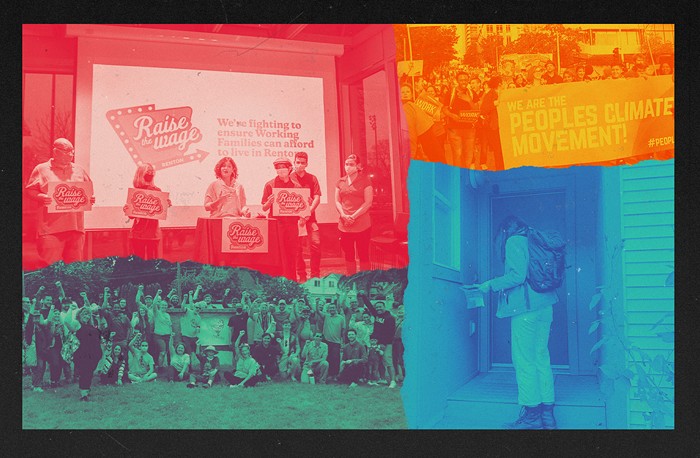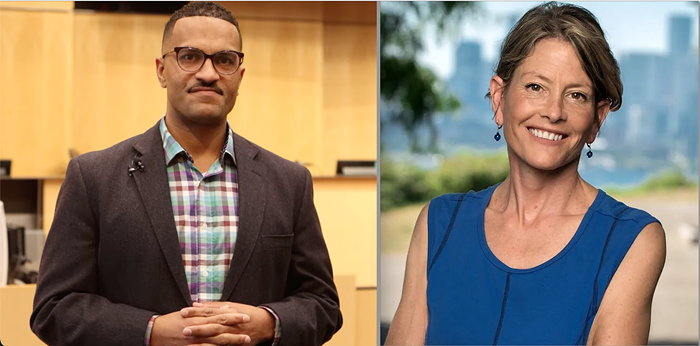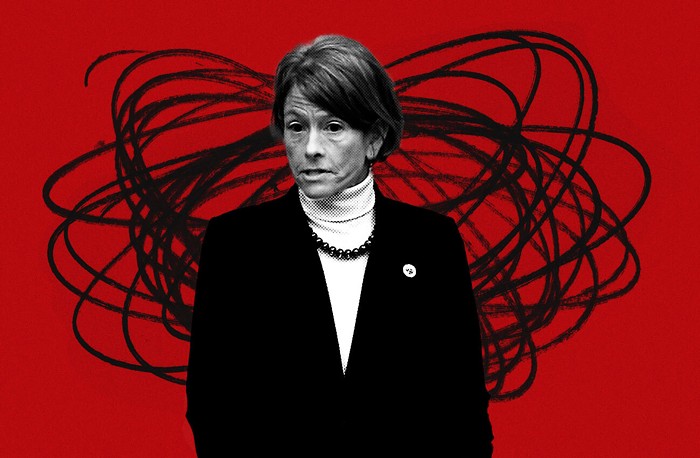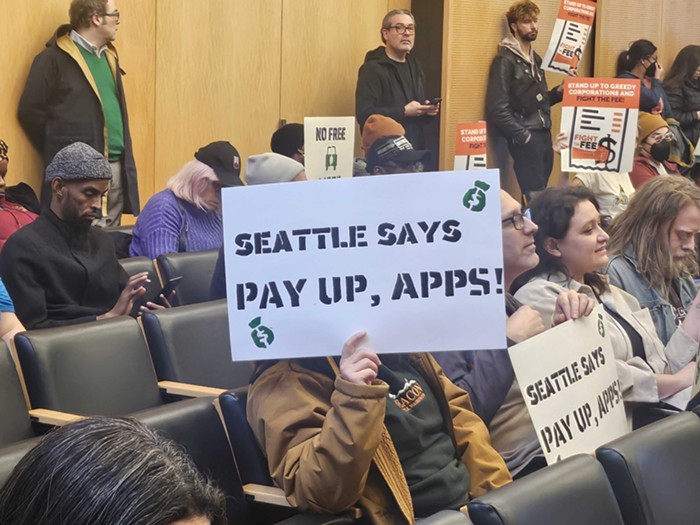
A Crosscut survey from March showed that of 125 arts organizations in the area, 72% said they “don’t have enough cash on hand to cover operating expenses for the next 12 months.” And according to a recent ArtsFund survey, arts and cultural organizations in the Puget Sound area expect a 42% decrease in grand total income for 2020/21 as compared to 2018/19. Let's not even talk about the cost of living in Seattle. Or the confusing path back to reopening that many venues face right now.
While watching Questlove's documentary Summer of Soul over the weekend, which spotlights how New York City bankrolled free shows in Harlem over six weeks in 1969, I was reminded of the power arts can have on cities when city leaders invest in cultural workers. While Seattle's Cultural Space Agency charter has emerged to stymie cultural displacement in the city, a lot of work is yet to be done to make sure that Seattle can be a hospitable place for artists to work and live.
So what's Seattle's next mayor going to do about it? I called up seven of our city's mayoral candidates and asked them about their proposed arts and culture platforms (or lack of one). In alphabetical order, here's what they had to say.
COLLEEN ECHOHAWK

Particularly of interest to me are three commitments within her plan. One has to do with exploring a guaranteed basic income pilot program for Seattle-area artists. Similar to the one proposed by San Francisco mayor London Breed earlier this year, the program could guarantee qualifying artists a set amount of money each month to go toward housing, supplies, and other necessities. During our interview, Echohawk said she sees this potential program as a way to “commission artists to find ways for our city to celebrate and to heal and to reconcile,” given this past year's turmoil.
The second commitment of interest in her plan promises to redistribute 10% of the percent-for-art ordinance to Indigenous artists in the city. The ordinance, created in 1973, takes 1% of capital-improvement project funds to go toward purchasing and/or commissioning works from area artists. Though small, the 10% of the 1% would guarantee more Indigenous art gets placed in spaces throughout the city.
And finally, Echohawk is also committing to prioritize transferring the city’s surplus properties into the hands of Indigenous cultural organizations in Seattle. Over the phone, she pointed to the difficulty of getting those without cars to the Daybreak Star Indian Cultural Center in Magnolia (itself a surplus property formerly owned by the government that Indigenous activists took over in 1970). She said this prioritization has “everything to do with when Native people were kicked out of the city in 1865” and hopes that it will allow Indigenous-led organizations to provide a space for art-making, language classes, and cultural resiliency in more accessible places in the city.
JESSYN FARRELL

“We need to support artists through social housing, full stop,” she told me. In her ST3 for Housing plan, Farrell calls for 70,000 units of affordable housing and thinks part of that needs to be “social housing targeted toward artists, particularly BIPOC artists.” She also recognizes the financial instability and lack of benefits that come with being a self-employed artist. She is running on proposing a portable benefits pilot project that would include childcare workers and artists, guaranteeing retirement, paid family leave, and paid sick leave.
Farrell also said that while serving as the chair of the governor's economic recovery task force, she heard from many artists who needed help with internet access and expensive recording equipment. She is calling for direct grants to help artists obtain these things, while also working on free municipal internet for all to overcome that digital divide. Farrell told me she believes art is a “conduit to healing." In the next Families, Education, Preschool, and Promise Levy, she wants to propose money that will directly support “artists who are doing trauma-related work that support young people in communities that are particularly beset with gun violence and other trauma.”
She called smaller-run guaranteed basic income programs for artists “way too incremental,” saying that “we need to think of it as broadly accessible and not as for just a few folks.” Interestingly, Farrell sees artists and art as crucial parts of the green economy and believes that any discussion of “greening up our infrastructure” needs to include art and art organizations in our community.
M. LORENA GONZÁLEZ

González pointed to the direct cash assistance opportunity in the Seattle Rescue Plan as something that, if elected mayor, she would like to scale-up, equitably targeting artists and organizations most in need. Though the plan only provided $3 million to the Office of Arts and Culture for relief grants to arts and culture organizations and businesses, she told me it “can’t be seen as a silo” and that she expects “more financial assistance from the federal government over the next five years.” She also said she was open to revisiting the admissions tax and wants to look into “other local levers that we can pull to create a more stable stream of revenue to support the arts and culture community.”
Also part of her plan is to reinvigorate the Office of Economic Development. The office houses the Office of Film + Music, and González wants to “make sure that when we are looking at our economic development practices, that we are including and incorporating the creative economy.” She wants to double down on making it easy for those in the film and music industry to access direct cash assistance and technical help.
BRUCE HARRELL

When it came to ideas about how to best help the city, however, some of his plans were a little less hip. Like his interest in encouraging venues like the Royal Esquire Club to host open mics, so then the city of Seattle can “evangelize, promote, and incentivize people to go to all of these forums” to market the city’s talent. But he also believes that “rent stabilization and the threat of displacement” are some of the largest impediments to artistic life in Seattle. Harrell is interested in potentially replicating the 12th Avenue Arts model—a combined affordable housing and performance space—elsewhere in the city.
Looking to the future, Harrell said he was “very intrigued and supportive” of a guaranteed basic income for artists program, but wants to “make sure we have the dollars to do it, and, and to what extent we can do it.” Harrell also talked about his support of Save the Showbox, which he called “critically important." He told me he tried to facilitate a resolution by meeting with legal representatives from both sides.
“From a policy standpoint, I will make sure we invest to prevent displacement and to come up with policies to help with rent stabilization,” he said. “Again, believing that artistic space is something we need to preserve and invest in.”
ANDREW GRANT HOUSTON

Architect Andrew Grant Houston has a lot of ideas about how to address the arts and culture community here in the city. During our interview, he underscored the importance of housing affordability to making Seattle more hospitable for the arts and said he’d focus on quickly scaling up and producing permanent affordable housing for low-income people if elected.
In our call, he highlighted the power of the Cultural Space Agency, the public development authority created in December 2020 to slow the displacement of artists and cultural organizations in the city. Houston said he’d increase the agency’s operating expenses to $10 million a year—by redistributing the money from the police budget—to create a pool of money “to allow these [arts] organizations to compete against existing developers.” He points to the Black & Tan Hall as an example of a community and Black-led initiative that he’d like to see more of.
Houston pledges to transform one of Seattle’s deputy mayors into a bonafide night mayor to oversee the “third shift” workers in the city. He says he doesn’t plan to replace the current night mayor "nightlife business services advocate" position (currently occupied by Scott Plusquellec) but instead designate someone to oversee more than just bars and venues in Seattle.
“What I’m really focused on with a night mayor is recognizing that we are developing into a 24-hour city, and so this deputy mayor should be focused on that third shift,” he told me. “It's not just about our nightlife, it's also about all of our workers who are operating in that time, transportation issues, public safety issues, anything and everything related to that time of day.”
He also has a plan for a freelancer’s bill of rights to protect freelancing Seattleites—many of whom are artists—from wage theft, giving them portable benefits they otherwise do not have access to.
LANCE RANDALL

Out of all the candidates I interviewed, SEED Seattle's Lance Randall seems to be the only one to have actually participated in the arts in the past 18 months.
Rather than stumbling over my question about what he’s seen or been to lately, Randall couldn’t stop throwing events he's been to and artists he's supported my way. A keyboard player himself, he tickles the organ keys over at First AME Church on Capitol Hill twice every Sunday. He told me he just finished playing the organ in a King Youngblood music video and helped arrange a series of comedy shows over at the Rainier Arts Center.
Unfortunately, we cannot elect a mayor based on whether or not they have a Dukey Stick (Randall does). He has some interesting—if not already in place—ideas, like creating a public instrument library for musicians who had to sell their instruments during the pandemic, incentivizing developers to incorporate arts into new buildings, and establishing a rent recovery fund for arts organizations. But most of Randall’s ideas skew the public-private partnership route.
Throughout our interview, Randall repeatedly invoked connecting the corporate sponsors to artists in the city as a means to solve a variety of funding problems—from matching the Cultural Space Agency’s investments to making sure funds are distributed equitably. Randall said it would be “very difficult” to take tax dollars and pay for something like an artist basic income because “COVID has really damaged our financial position with the city.” He’d rather ask wealthy Seattleites and corporate donors to put into a fund.
“We don’t do a very good job of trying to create those partnerships with corporations so we can get to some of that philanthropic money,” said Randall. “I want to change that atmosphere and be a champion for artists and the creative economy. And not only make investments in the city, but also to get the business community and the philanthropic community to make investments into creative culture.”
CASEY SIXKILLER

The most cogent idea about the arts to come out of my talk with deputy mayor Casey Sixkiller had to do with his guaranteed basic income plan, which he calls the Reliable Income Supporting Equity (R.I.S.E.) pilot program. The pilot would provide $500 a month to 16,000 low-income families “to be able to really see who best it works for,” he said. While he wouldn’t go as far as committing to including the arts community within that plan, Sixkiller agreed that artists "need to be at the table when we design this thing to make sure if it's something that could work for them.”
The candidate also offered up some generalized ideas. To combat inequity in the arts he’s all about “sitting down with organizations to talk about what their experiences have been” to “understand what the barriers are.” He wouldn’t commit to spending more on initiatives like the Cultural Space Agency, but did concur that “generally speaking, [we] need to spend more on arts and culture in the city.” He said that the arts “should be baked into what our land-use decisions” are and that downtown could be a “huge opportunity” for arts activation given the number of empty storefronts.
Sixkiller seemed the most jazzed about the Durkanite accomplishments like the Climate Pledge Arena and the new ~revitalized~ Seattle waterfront, saying that the efforts are going to be a “game-changer” for the city.” He thinks both will help “people continue to see Seattle as a place that supports the arts,” with the opportunity to connect more local artists with a bigger audience. He said the new waterfront has “huge potential for us to showcase public art” while the arena can coordinate programming with the Seattle Center.



















